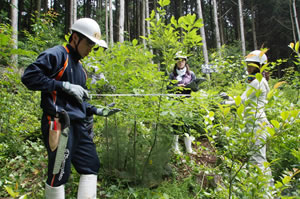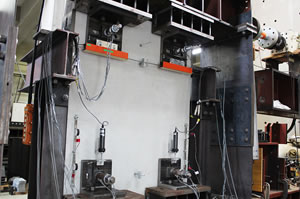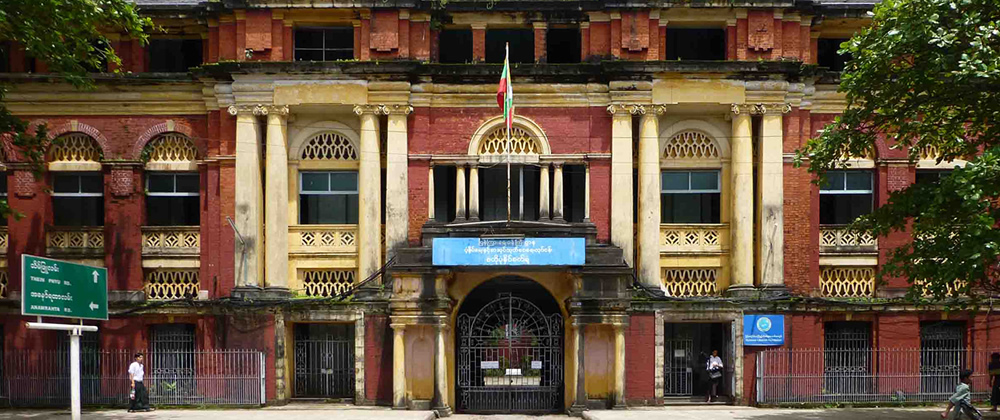Educational Philosophy
The environment around us is not something for this one point in time, the present, but rather is a resource (=environment/heritage) that is passed down from the past and on to the future. This course aims to enable students to learn the value of such “environment and heritage” from the enduringness and diversity of nature and culture, fostering in them design skills for creating future communities and lifestyles while appreciating and respecting nature and culture. Based on the philosophy that Environment and Heritage Design should be undertaken as sustainable design that aims to create sustainable environments maintaining a temporal perspective, while at the same time achieving ecological and spatial harmony amongst mankind’s various activities, the Environment and Heritage Design course endeavors to cultivate the following abilities in students.
- Ability to evaluate, preserve, and utilize environments and heritage handed down from the past
- Ability to manage environments and heritage
- Ability to improve and create the value of environments to be passed on to the future through technology
Human Resource Development・Educational Objectives(Curriculum Policy)
In this course, human resources are cultivated from perspectives such as the following.
- Develop practical education using an abundance of areas both in Japan and overseas as fields, nurturing human resources who are capable of both evaluating the value of a diverse range of environments/heritages and sustaining international environment/heritage design networks.
- Cultivate human resources capable of sustaining environment/heritage management, having acquired the specialization needed for evaluating, protecting, and passing on the value of environment/heritage, as well as the specialization needed for designing architecture, landscapes, and social systems that become heritage in the future.
- Cultivate human resources capable of sustaining environment design who have spatial harmony and temporal perspectives, having acquired skills for realizing safety, healthiness, functionality, and comfortableness that make sustainable design possible based on relationships between humans and the environment.
Profile of Preferred Student(Admission Policy)
- Students with the basic academic ability to study in the Environment and Heritage Design Course
- Students with an interest in and understanding of specialized fields related to Environment and Heritage Design
- Students who proactively undertake independent study and self-learning, and have high ethical values
- Students aiming to become advanced professionals, researchers, or leaders with a foundation in Environment and Heritage Design
Course Outline
Environment and Heritage Design course is composed of three academic fields.

Heritage Theory
In this class, students develop the ability to evaluate, preserve, and utilize environments and heritage. Based on these multifaceted evaluations, students carry out surveys and research aimed at protecting heritages—such as nature, landscapes, cities, buildings, culture, performing arts, lifestyles, and crafts—and their environments and designing uses for them in addition to investigating the meaning of and evaluating a diversity range of environments/heritages cultivated by nature and history of individual regions.
This field deeply explores the value and meaning of nature and heritage for people in modern society.

Environment and Heritage Management
In this class, students develop the skills to be able to manage environments/heritages. In addition to examining and understanding the cultural value of environment/heritage from an international perspective, students develop surveys and research for designing mechanisms for preserving and restoring the value of cities, buildings, and landscapes as regional assets and, utilizing these assets, encouraging sustainable and autonomous development.
This field develops mechanisms for handing down irreplaceable environments and heritages to future generations across cultures and national borders.

Environment Design Technology
In this class, students develop skills enabling them to improve or generate environment/heritage value through technology. In addition to examining and developing technologies that maintain and enhance environment/heritage value in modern society from a global framework, students develop surveys and research for creating designs that maintain the value of cities, buildings, and landscapes—which are regional assets—and generating new value for these. This field develops technologies to enable environments and heritages to both be utilized in the present and safely handed down to future generations.
Academic Degree Conferment Policy (Diploma Policy)
- Highly competent individuals with wide perspectives and assessment capabilities in the areas of environment-heritage and supporting the international network of environment and heritage design; and are developed based on the practical outfield educational experience, in both local and overseas context.
- Highly competent individuals who can support the management of environment and heritage and possess the expertise for a) the assessment, conservation and inheritance of environment and heritage and b) the design of architecture, landscape and social system that ought to become future heritage.
- Highly competent individuals who possess the technique in the realization of safe, healthy, functional and comfortable sustainable design based on the relationship between humanity and environment; and contribute to the environmental design through perspectives of harmonizing of space and time.
- Highly competent individuals with high degree of comprehensive research and design capability to conduct survey, analysis, discussion, planning, design, proposal etc. in the fields as mentioned above. Upon graduation, the programme aims to cultivate professionals that will be environment and heritage designers that will be involved in the creation of future heritage and also to engaged in a wide variety of profession such as research in university/research institutions/museum, administrator of architecture/landscaping/urban planning/cultural revitalization/environmental policies, planners of town planning/village revitalization, managers of heritage conservation/heritage restoration, designers of architecture/landscaping/town scaping and engineers of architecture/landscaping.
- In addition, the ultimate aim is to cultivate environment and heritage designers of international standard with educational and research abilities where doctoral graduates will play a leading role in the field of environment and heritage in Japan and abroad; and be involved in the development of human resources in university and research institutions.
Global Architect Program
The Global Architect Program was established on April 1, 2017 in the Master's Program of the Graduate School of Design.
This program develops human resources with comprehensive design ability with engineering and cultural arts knowledge on architecture and environmental design. Applicants who can take this program need to have been graduated from the Department of Environmental Design at the School of Design, Kyushu University, or have been graduated from the Department of Architecture at other universities and have achieved the educational achievement goals of the Department of Environmental Design. Applicants must also be enrolled in the Master's Program in Environment and Heritage Design Course, or in the Master's Program in the Department of Design Strategy in the Graduate School of Design, and be authorized by the Director of the Graduate School of Design.
Those who complete the program will receive a program completion certificate.
This program will be applied for accreditation as an undergraduate and master's degree program (named “Environmental Design Program”) of JABEE in architectural field (accreditation for UNESCO-UIA educational program) in conjunction with the graduation of the environmental design department (or a bachelor's degree course that is regarded as achieving the equivalent educational goal). > Click here for the learning and education goals for the JABEE Environmental Design Program. > Click here for the curriculum mapping for the JABEE Environmental Design Program.
Please refer to the 2019 Graduate Student Handbook (p. 35) for details on how to study and course subjects.
